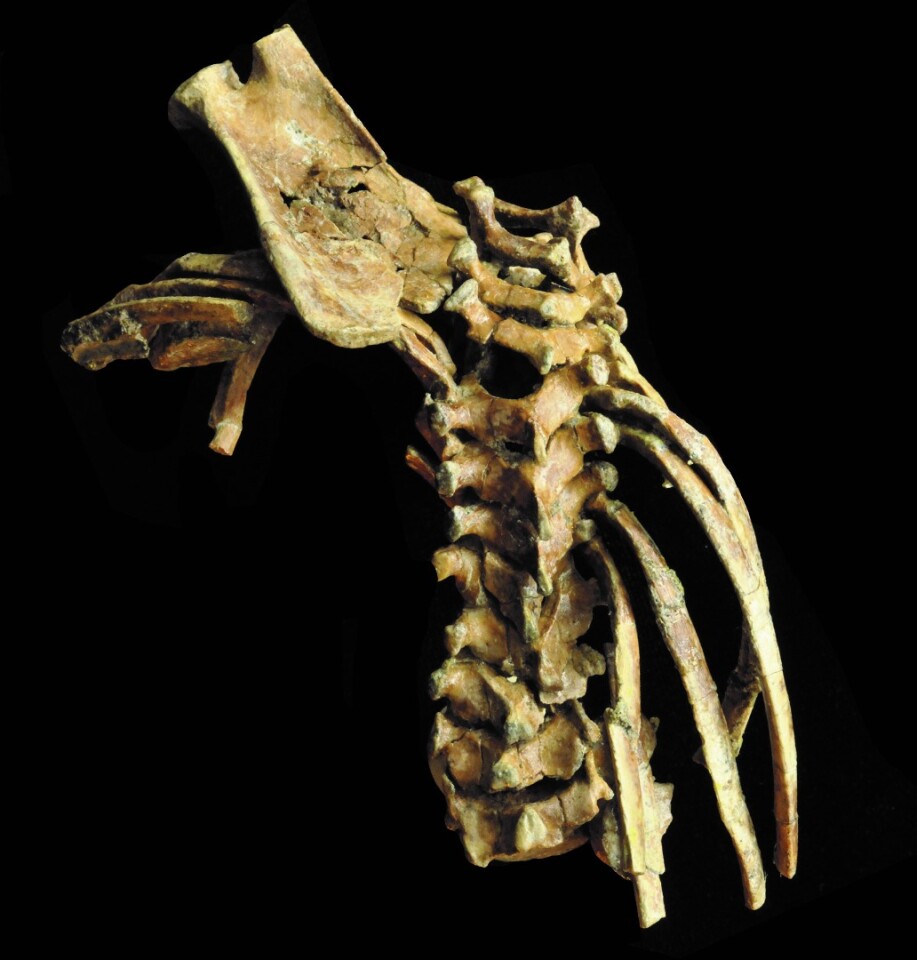It may have taken 13 years to get her all cleaned up, but a toddler's fossil named Selam has finally be separated from the sandstone in which she was entombed. Beneath the rock was a surprise: The most complete spinal column of any early human relative. The discovery changes the point at which we thought our spines began to evolve by several million years.
Selam, a name that means "peace" in the Amharic language of Ethiopia, was first found in Dikika, Ethiopia thirteen years ago by Zeresenay Alemseged, a professor in the department of organismal biology and anatomy at the University of Chicago. She belongs to the species Australopithecus afarensis—the same as Lucy, the famous skeleton discovered in 1974.
Since the discovery of Selam, Alemseged and his team have been carefully cleaning the bones to finally reveal a almost completely intact skeleton. It was a significant find, because most of the fossils of our early relatives are fragmentary and sometimes create more questions than they answer.
In this case, researchers were able to see a key link in the evolution of the spine from primates to humans as we began to walk upright. As this process took place, humans began to have fewer rib-bearing vertebrae in our upper backs and more in our lower backs to allow for effective gait patterns. Like us, Selam was found to have twelve thoracic vertebrae with twelve ribs – marking the first time a fossil from a human ancestor showed this pattern.

"For many years we have known of fragmentary remains of early fossil species that suggest that the shift from rib-bearing, or thoracic, vertebrae to lumbar, or lower back, vertebrae was positioned higher in the spinal column than in living humans, but we have not been able to determine how many vertebrae our early ancestors had," said Carol Ward, a professor of pathology and anatomical sciences in the University of Missouri School of Medicine, and lead author on the study. "Selam has provided us the first glimpse into how our early ancestors' spines were organized."
Ward got involved after Selam was sent to the European Synchrotron Radiation Facility in Grenoble, France where the bones were observed using a stadium-sized machine that images subjects using multiple x-ray beams shot through lenses. The results of those scans went to Ward, who furthered the research. She told us that the find has significant implications for understanding human evolution.
"Our closest living relatives, chimpanzees and gorillas, have more rib-bearing vertebrae and pairs of ribs than we do, and when we either lost the extra one, or whether they evolved extras, has not been a question we have been able to address in the fossil record prior to 60,000 years ago before now," she told New Atlas. "Knowing that some of our earliest ancestors were already built like us is a very important piece of the puzzle."
Previous estimates of when our spines began to resemble their current form put the evolution at approximately 60,000 years ago. The Selam skeleton however, now pushes that back several million years.
"Continued and painstaking research on the Selam shows that the general structure of the human spinal column emerged over 3.3 million years ago, shedding light on one of the hallmarks of human evolution," said Alemseged. "This type of preservation is unprecedented, particularly in a young individual whose vertebrae are not yet fully fused."
Ward also told New Atlas that the find has implication for understanding the way in which our spines effect our biomechanics from an evolutionary point of view.
"Interestingly, Selam and her contemporaries had a different pattern of transition among the parts of the spine than modern apes or humans, suggesting that this may have permitted similar function in allowing the waist to bend and rotate during bipedal walking given the different and more primitive way the pelvis was hafted onto the spine early in our evolution," she said.
The work of the research team has been published in the the Proceedings of the National Academy of Science.
Source: University of Missouri






